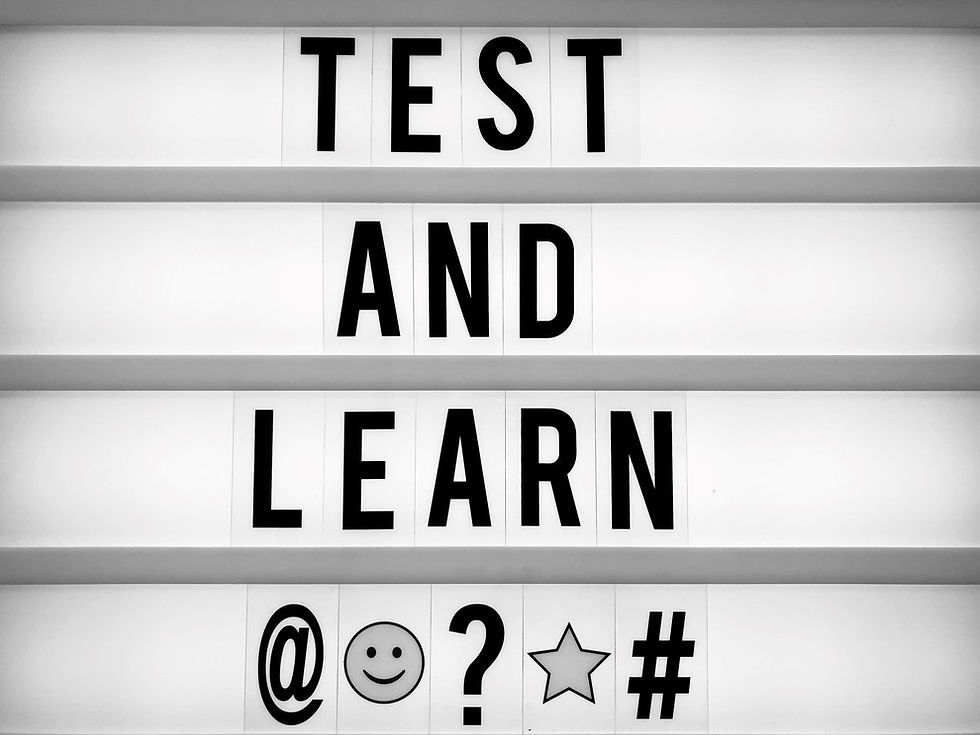Test and Learn - how big is too big?
- Claire Chambers
- Jul 28, 2020
- 2 min read

We’re huge advocates of the test and learn approach.
Why?
There’s a number of reasons:
It allows you to move quickly without having to have everything perfectly set up
It’s permission to fail, so you may take a few more risks than you would usually
Helps leaders be more courageous and try things they may not have been brave enough to do before - the beauty is you can wind back if it doesn’t work!
Gives leaders and budget holders confidence that they don’t have to commit big budget yet
It gives others confidence that this is an organisation interested in innovation, creativity and willingness to try new things - a symbol of sorts
Everyone understands that if it fails that’s ok, but we’re trying something together
All the points above are so important and in different organisations different ones have held true.
But often people think small, when you can also think big. The biggest test and learn idea I’ve run is for 30,000 people!
We wanted to shift the mindset around safety. It was the organisation’s number one priority but for many it had become just a set of rules, it was being followed because people were being measured against it. The purpose and emotion behind that priority was being lost.
So we decided we needed to change the conversation.
On one day we asked the whole organisation to stop for one hour. That one hour was to talk about safety and well-being.....but not about the rules, or performance but about why it really mattered. It was our Stop For Safety day.
Leaders were encouraged to share personal stories, to focus on the areas of safety and well-being that mattered to them and their teams, whether that was for customers or their people.
We provided materials, videos, conversations guides, prep sessions...everything to shift the conversation to something other than stats about how the organisation was performing against its safety measures.
We didn’t know how brave the organisation would be. We didn’t know if leaders would be confident to change the conversation. Would people open up about personal stories? Would they be brave enough to make connections at an emotional level?
One director even said to me that they didn’t want to take the blame if it went wrong. No worries I said, I’ll take the blame. If we want to shift things we need to try a new way and that’s what we did.
It worked. It was different. People connected with each other around personal stories they’d never heard before. People got creative.... creating videos to tell their stories, taking photos, sharing ideas, generating new ways to do things...one team even recorded a rap!
It was a big test but the organisation learned a whole lot more. It re-connected with the power of personal stories, with making emotional connection, with being brave and having empathy.
It went global the year after. It worked.






Comments